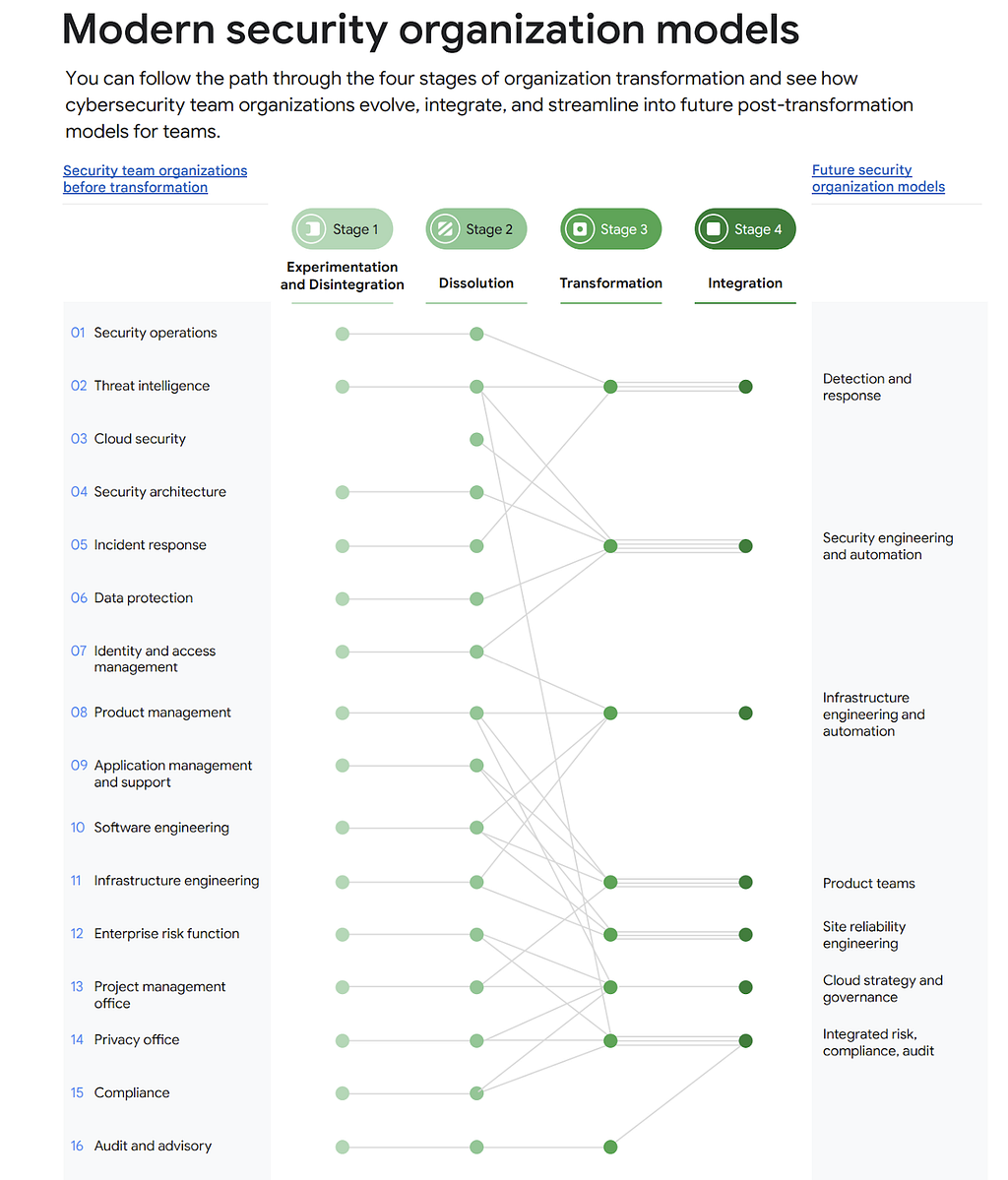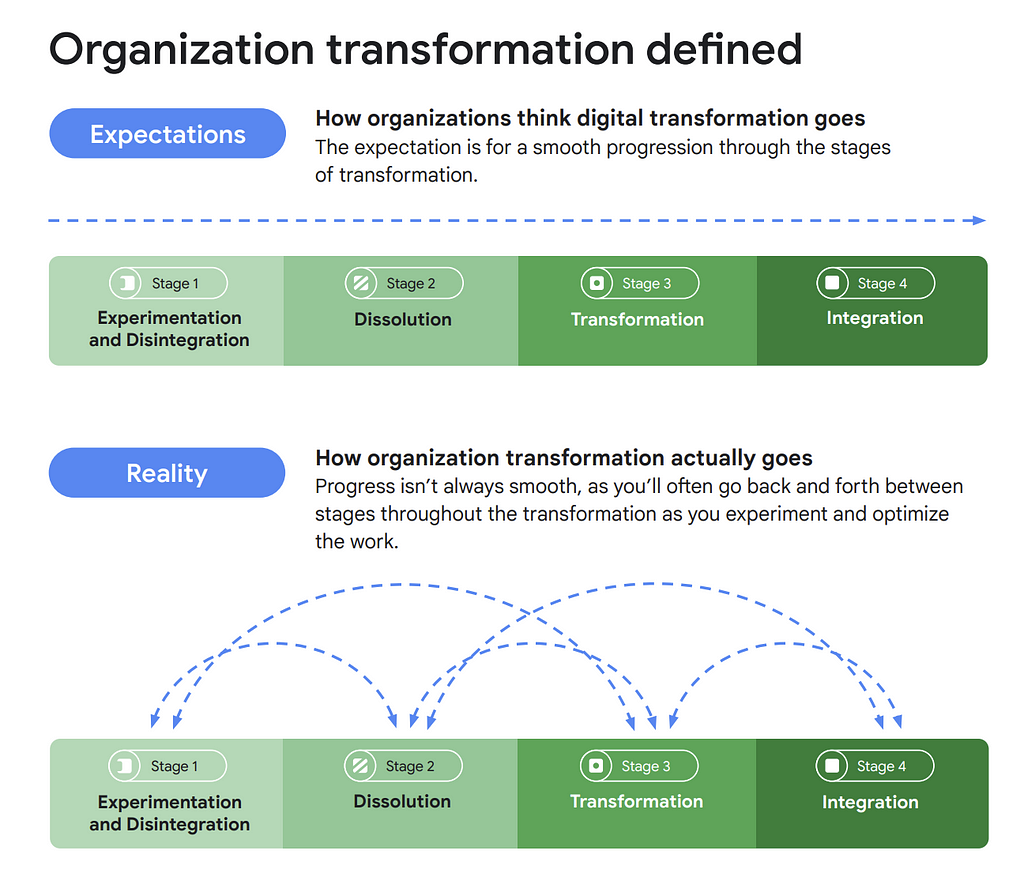So some of you are thinking “ewwww … another security transformation paper” and this is understandable. A lot of people (and now … a lot of robots too) have written vague, hand-wavy “leadership” papers on how to transform security, include security into digital transformation or move to the cloud (now with GenAI!) the “right” way, while reaping all the benefits and suffering none of the costs. Because tote leadership!
This is not one of those, promise! Why not? Because our new paper helps answer two real — and really hard — questions:
#1 Based on the experience of others, what does a “modern” or transformed organization’s security capability look like?
#2 Given what you have today, how to transition from whatever you have to what we discussed in #1 above?
I bet you’d agree that this is really tricky. Hence our paper!
Let’s start with my favorite insights and surprises below (and, yes, Gemini via Gems had a “hand” in this, curation though is very human):
- The Primacy of Organizational Transformation: The guide emphasizes that digital transformation is not solely — or even largely — about technology adoption, but fundamentally about transforming the organization, its operations, its team structure and its culture. This may surprise security leaders from traditional organizations who might primarily focus on technical solutions and “let’s just get new tools!”
- The OOT (Organization, Operations, Technology) Approach: The guide advocates for prioritizing organizational and operational changes before finalizing technology decisions. This may challenge the conventional approach in traditional organizations where technology choices often precede organizational adaptation.

- The Significance of a Generative Culture: The guide stresses the critical role of a generative culture in achieving successful transformation. Cultivating a generative culture is essential for fostering adaptability and thus ultimately for modernizing security. Such a culture, characterized by high trust, information flow, and shared responsibility, may be a departure from the hierarchical and siloed structures prevalent in traditional organizations.
- The Distribution of Security Responsibilities: We propose a shift away from centralized security functions towards a model where product teams assume greater ownership of security throughout the development lifecycle. The distributed responsibility model emphasizes empowering product teams to build security into their applications from the outset. This may surprise — and upset — security leaders accustomed to a centralized security model.
- The Difficulty of Letting Go: We remind everybody that moving away from legacy processes and controls can be unexpectedly challenging, even painful. Teams may be attached to familiar processes or resistant to change, even if it leads to visibly greater efficiency and security. Security leaders might be surprised by the internal resistance they encounter when trying to implement new ways of working.

As usual, my favorite quotes from the paper:
- “As we’ve helped more security teams make the move to the cloud, we’ve identified nuanced challenges that they face — namely those related to team structure, changing business operations, and establishing culture — that are critical to their success”
- “Where do we start when we talk about transforming the cybersecurity organization within a company that’s historically delivered security to on-premise systems within a highly centralized function? Ideally, we think this conversation should start with defining security goals framed in business outcomes like capabilities, velocity, quality, cost, and risk.”
- “You’ll find many opinions about how cybersecurity enables a successful digital transformation, but most observers are unaware of the complexity involved in effectively collaborating and sharing responsibilities, skills, tooling, and other capabilities with fast-moving product-based teams who own the full set of responsibilities — including cybersecurity — for the applications they build and run.”
- “Moving away from the toil often associated with securing on-premise systems can be challenging for unexpected reasons. We think security in the cloud is a better future that can be difficult to imagine without inspiration and intentional culture development. ” [A.C. — this is not some snide remark about ‘server huggers’ but a very human tendency to like whatever they invested their blood and soul into…]
- “Our first step in helping customers work through transition to the cloud and more modern ways to work starts with backing away from the belief that it’s the technology that’s transforming.” [A.C. — my fave example is here]
Now, go and read our new paper!
P.S. “Anton, but I like SOC papers, can I haz moar? — Yes, there is one coming in a few weeks! Part 4.5 of our glamorous SOC of the Future series”
Related:
- “CISO’s Guide to Cloud Security Transformation” paper (2021)
- Moving shields into position: How you can organize security to boost digital transformation (official launch blog for the same paper)
- How CISOs need to adapt their mental models for cloud security
- For a successful cloud transformation, change your culture first
New Office of the CISO Paper: Organizing Security for Digital Transformation was originally published in Anton on Security on Medium, where people are continuing the conversation by highlighting and responding to this story.
The post New Office of the CISO Paper: Organizing Security for Digital Transformation appeared first on Security Boulevard.
Anton Chuvakin
Source: Security Boulevard
Source Link: https://securityboulevard.com/2024/09/new-office-of-the-ciso-paper-organizing-security-for-digital-transformation/